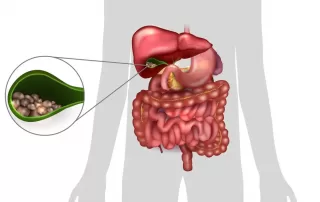Biliary colic, also known as a gallbladder attack, is a severe abdominal pain caused by the blockage of the bile ducts, usually by gallstones. The pain occurs when a gallstone temporarily blocks the cystic duct, which is the channel through which bile flows from the gallbladder to the small intestine. This blockage creates a buildup of pressure in the gallbladder, leading to intense pain.
Symptoms of biliary colic typically include sudden and severe pain in the upper right abdomen or the center of the abdomen just below the breastbone. The pain may radiate to the right shoulder or back and can last from a few minutes to several hours. Other symptoms might include nausea, vomiting, and sweating. The pain often occurs after eating a fatty meal, as the gallbladder contracts to release bile, which is obstructed by the stone.
Diagnosis of biliary colic generally involves a physical examination, blood tests to check liver function, and imaging tests such as an ultrasound or CT scan to detect gallstones and assess the condition of the bile ducts.
Treatment for biliary colic focuses on relieving symptoms and preventing future attacks. Pain management may involve medications to alleviate pain and nausea. In recurrent cases, or if complications arise, surgical removal of the gallbladder (cholecystectomy) is often recommended. This surgery can be performed laparoscopically, which is minimally invasive and typically allows for a quicker recovery.
Preventive measures include maintaining a healthy diet, losing weight gradually if overweight, and avoiding foods high in fat and cholesterol, as these can contribute to the formation of gallstones.


